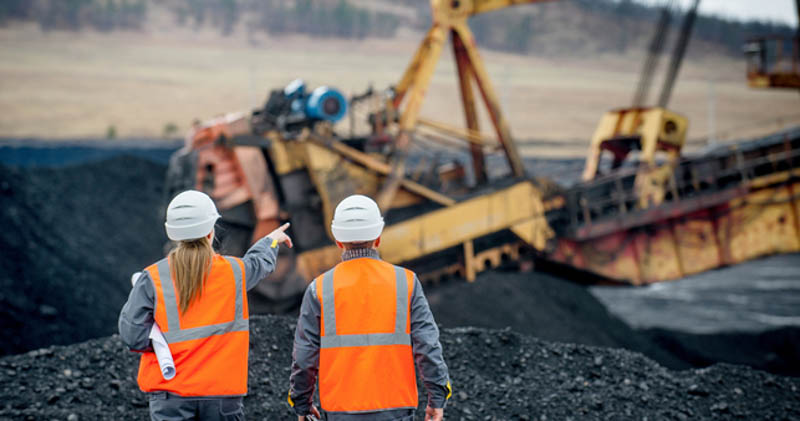
Everyone deserves to be safe at work.
Yet in 2019, 183 Australian workers died from injuries related to their jobs.
Tragically, that was worse than the previous year. In 2018, 144 workers died, meaning it increased by more than 25 per cent the following year.
What can business owners do to better protect their employees, and themselves? We’ll take a look at this question below. But first, let’s look at the six most dangerous and deadly industries for Australian workers.
1. Three fatal Fs: farms, forestry and fishing
Agriculture, forestry and fishing is hard and dangerous work.
Not only do workers have to deal with hazards like chemicals, noise, dust, sun, animals and dangerous equipment, the work is often remote and isolated.
This is the deadliest business for Australian workers to be in.
Safe Work Australia says 37 workers in agriculture, forestry and fishing died in workplace incidents in 2018.
As a raw number, that doesn’t represent the most fatalities in a single industry. But it is by far the highest rate of deaths given industry size.
Workers in this industry suffered 11.2 deaths per 100,000 — almost double the rate of the next highest.
2. The dangerous road: transport, postal, warehousing
The transport, postal and warehousing industry had the most fatalities in 2018 on raw figures, with 38 employees losing their lives.
That’s a rate of 5.9 per 100,000 workers, which tells you something about both how huge this industry is, and how disproportionately dangerous agriculture, forestry and fishing are.
Transport in particular is an inherently hazardous line of work.
Fatigue, speeding, drug use, poor vehicle maintenance, driver ability and attention, road conditions, environmental factors — these are just some of the things that can cause incidents among transport operators.
3. Digging deep: mining
Mining has made huge inroads into improving health and safety over the last decade.
Back in 2003, the fatality rate in the mining industry was 12.4 per 100,000 workers. In 2018, that figure plummeted to 3.7.
But it still represents one of the most dangerous work scenarios in Australia, with the third highest fatality rate and an average of 9 workers dying each year.
Inherent risks include manual handling, slips trips and falls, being hit by moving objects or machinery and working with high risk machinery.
BrightHR helping you manage your people and business
Contact us to find out how BrightHR people management software can help you manage and store your essential employee records and documents.
4. Building a safer world: construction
The construction industry holds some important clues for every employer about managing Work Health and Safety.
Let’s look at the statistics from the last three years.
In 2018, 24 construction workers died because of their jobs. That was 2 people for every 100,000. In 2019, that figure dropped by a quarter to 18. But in 2020, it rose again to 27 — and that was before the year had even ended.
What does this tell us?
It tells us Work Health and Safety (WHS) is not a static set of rules that employers can set and forget. It requires constant and ongoing attention.
To make sure their workplace is safe, employers need to consistently maintain and review their procedures and safety protocols.
5. The front lines: electricity, gas, water and waste services
Electricity, gas, water and waste services is an umbrella term that covers a wide range of activities and groups.
It spans from electricity generation, transmission and distribution, to gas supply, water sewerage and drainage services to waste treatment and disposal.
In 2018, the industry as a whole had 3 deaths, which was a rate of 2 workers per 100,000.
This gives it the fifth highest fatality rate of any industry in Australia.
You only need intuition to tell you that working with electricity is inherently dangerous. But labourers, drivers and plant operators in waste treatment, disposal and remediation are also at risk.
6. Made in Australia: manufacturing
In 2018, 13 workers in the manufacturing sector died because of their jobs, representing about 1.4 workers per 100,000.
Manufacturing in Australia is a huge and diverse industry with thousands of workers doing many different activities.
From food and beverages, to textiles, wood and paper products, chemicals (think pesticides, pharmaceuticals, cosmetics), metal and plastics, machinery and furniture, the list could go on.
The employers responsible for these workplaces could be anything from small, independent manufacturers producing limited stock to large-scale production chains.
This all leads to the big question: how do WHS rules protect such a huge variety of employees? And how do employers navigate them?
How to build a safety culture at work
Australia has some of the most comprehensive Work Health and Safety (WHS) laws in the world.
They have been designed to make workplaces safer, and thankfully, they do.
But they’re complicated. If you’re an employer who wants to be 100% sure you are protecting your staff — and your business — it’s hard to know exactly where to start.
The first thing you need to understand is what your obligations are. Then you need to have a plan in place: how will you best position yourself to do the right thing you make sure you’re in compliance and keep records to demonstrate it?
If you’re a business owner or manager and want to know what you can do to protect your employees and your business, Employsure can help. Call our 24/7 advice line today.

Get Workplace Advice Now
Call our team to receive free initial advice on any workplace relations topic.
